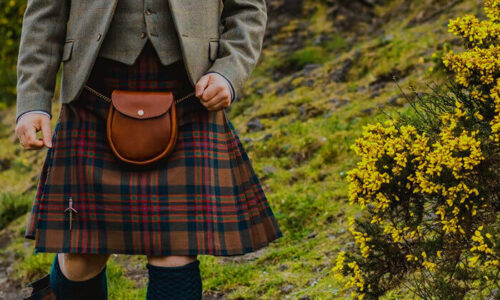Introduction
Scotland is a country that often leaves visitors speechless. Its dramatic weather and stunning landscapes are well-known. The amount of snow that Scotland receives each season is one factor that contributes to the awe. This comprehensive guide will explore the topic “How much snow is there in Scotland?” Our journey will take you through the annual snowfall and the most affected regions, as well as other important information.
How much snow does Scotland get?
Scotland is not the first thing that comes to mind when you think of a snowy wonderland. Scotland does experience snowfall, particularly during the winter months. Snowfall is unpredictable in Scotland, which is known for its unpredictable climate.
Scotland receives 20 to 60 inches (50 to 150 cm) of snow on average each year, with the Highlands receiving the most. The west coast of Scotland and the islands are milder, with less snowfall.

Snowy Winters in Scotland
Visitors will find the Scottish winters to be a unique experience, even though they can be challenging for locals. The magical atmosphere created by the snow-capped landscapes and frozen lochs is enhanced by cozy fireside moments. The Highlands and Cairngorms are the snowiest regions.
The Best Time to Experience Snowfall in Scotland
Winter is the best time to visit Scotland to see its snowy landscapes. Winter sports enthusiasts and photographers will find that December and January are the best months to visit Scotland.
Regions most affected
Snowfall in Scotland does not fall evenly. It’s important to know that different regions have varying amounts and types of snow.
The Highlands
The Scottish Highlands is known for its rugged terrain and heavy snowfall. This region is ideal for winter getaways, with an average snowfall of more than 100 inches (250cm) in some places.
Cairngorms national park
Cairngorms is a snow lover’s paradise, with its peaks covered in snow and breathtaking views. It is a winter sports enthusiast’s paradise, as it receives a lot of snow.
Orkney and Shetland Island
Orkney and Shetland, on the other hand, experience mild winters. These islands are unique because they rarely get snow, making them a great destination to visit during the winter months.

FAQs about Snowfall and Scotland
How does Scotland cope with heavy snowfalls?
Scotland is prepared for heavy snowfall. To keep roads clear, the government invests in snowplows and gritting. Local communities are also crucial in dealing with the snow.
Can I visit Scotland in the snowy season?
You can visit Scotland in the winter. The beauty of Scotland in winter is a major attraction for tourists. Plan your trip to take into account the weather conditions.
Do you have winter sports in Scotland?
Scotland is a great place to enjoy winter sports like skiing and snowboarding.
What’s the best place to enjoy the snow?
It is a truly unique experience to explore Scotland’s snowy landscapes. You can enjoy skiing, snowshoeing or simply taking in the scenery while sipping a hot beverage.
How does snowfall affect daily life in Scotland?
Scots have adapted to the snowfall and are well-prepared to deal with it. They also have strategies to keep their daily lives running smoothly.
Accommodations are available in snowy areas?
There are many accommodations in snowy areas. You can find cozy hotels, lodges and cottages that provide a warm retreat from the snow.
Conclusion
Snowfall in Scotland is a common occurrence, and it transforms the country into an enchanting winter wonderland. The amount of snowfall in Scotland varies by region, with the Highlands National Park and Cairngorms being the snowiest. Scotland’s winter landscape is a magical place, whether you are an adventurer or just looking for a beautiful snowy landscape.
Don’t forget the snowy embrace when planning your trip to this beautiful country. You won’t forget this experience.




